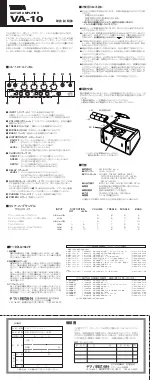
HT66FV1x0 Integrated Audio Amplifier Application Guideline
AN0486EN V1.10
4 / 16
June 8, 2021
The advantages and disadvantages of the aforementioned amplifier types are summarised in the table
below.
Class A
Class B
Class AB
Class D
Operating Point
Location
Load line midpoint
Load line cut-off point
Between load line midpoint
and cut-off point
Transistors operate in a
switching mode
Conduction Angle
θ=360
°
θ=180
°
180°<
θ<360
°
Switching status
Distortion
Lower distortion
Higher than Class AB with
crossover distortion
Crossover distortion can be
eliminated
Higher distortion
Power Transfer
Efficiency
Lowest efficiency, under
50%
Efficiency in the rage of
50%~78.5%
Efficiency in the rage of
50%~78.5%
Highest efficiency,
higher than 85%
Main Applications Low power amplifiers
with small distortion
High power amplifiers
General audio speakers
High power or high
efficiency amplifiers
Amplifier Electrical Characteristics
The characteristics of the HT66FV1x0 integrated Class AB amplifier is listed in the following table
(Ta=25
°C).
Total Harmonic Distortion – THD
When a sinusoidal signal of a particular frequency is input to the power amplifier, harmonics based
on input frequency multiples are generated due to factors such as the amplifier internal circuit or
external component non-linear distortion. The ratio between the root mean square value of these
harmonic amplitudes and the input frequency amplitude is called the total harmonic distortion.
Noise – N
In addition to the harmonic distortion described above, there might be other interference caused by
circuit and components, such as thermal noise, etc.
The total harmonic distortion and noise are combined to describe the output noise index, which
should be as small as possible. The typical value of (THD+N)/S can be as low as 0.2% for the
HTFV1x0 series.
Maximum Output Power – P
OUT
This character reflects the output capacity of an audio power amplifier. Usually the audio amplifier
manufacturer will provide several product P
OUT
values for certain operating voltages and rated load
conditions. The output power of the MCU integrated power amplifier is 1.5W when V
DD
is 5V and
(THD+N)/S equals 10%.
Users should select a proper speaker according to the amplifier output power and impedance. The
speaker power is usually a little higher than the amplifier power. It is suggested that the speaker
impedance should match the corresponding load parameters listed below.

































